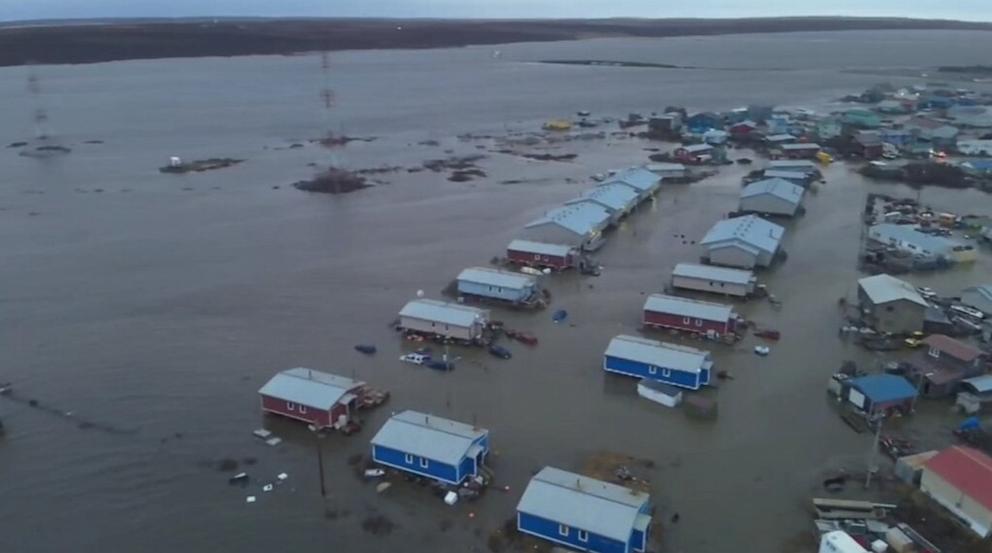Typhoon Halong, once a powerful Category 4 tropical cyclone in the western Pacific, has made a rare and destructive landfall in western Alaska as an extratropical storm, unleashing severe flooding, damaging winds, and widespread devastation across the Yukon-Kuskokwim Delta region. Authorities have confirmed one fatality, while dozens of residents were rescued as rising waters inundated coastal towns and villages.
Powerful Winds and Record Flooding Hit Alaska’s Western Coast
Though weakened as it tracked northward, Halong retained hurricane-force gusts and torrential rains. The National Weather Service (NWS) reported sustained winds exceeding 70 mph (113 kph) in some coastal areas, with storm surges flooding low-lying communities and washing away infrastructure. The combination of high tides and debris intensified coastal damage, cutting off critical transport and communication links.
In Bethel and nearby villages, floodwaters submerged homes and roads, forcing evacuations and isolating entire neighborhoods. Emergency shelters were opened in schools and community centers as the Alaska State Emergency Operations Center coordinated relief efforts with the National Guard and U.S. Coast Guard.
“This is a dangerous and rapidly evolving situation,” said a state emergency coordinator. “Residents should stay alert as floodwaters begin to recede, since conditions remain hazardous.”
Widespread Damage and Ongoing Rescue Operations
Officials described the flooding as among the worst seen in the region in decades. Power outages and communication blackouts affected several remote communities, complicating rescue and assessment missions. The storm’s transition into an extratropical cyclone allowed it to grow in size, expanding its reach across much of western and interior Alaska.
The system is now moving northeastward, with forecasters warning of continued heavy rainfall and strong winds across the Bering Sea and interior Alaska over the coming days.
Scientists Link Storm Strength to Warmer Oceans
Meteorologists point to warmer Pacific Ocean temperatures as a key factor behind Halong’s unusual intensity at such northern latitudes. The extra warmth allowed the typhoon to maintain strength much farther north than typical tropical systems. Climate scientists caution that as global sea surface temperatures rise, more powerful storms could reach regions historically unaccustomed to tropical cyclone impacts.
“We’re witnessing a shift in storm patterns driven by climate change, and Alaska is increasingly finding itself in the path of extreme weather once thought impossible this far north,” said one climatologist.
Assessing Damage and Long-Term Impacts
Preliminary assessments suggest that infrastructure damage and property losses could total tens of millions of dollars. The destruction spans roads, power grids, and coastal defenses, with recovery expected to take weeks. Relief agencies are prioritizing clean water, food, and medical support for displaced residents.
As recovery operations continue, Typhoon Halong stands as a stark reminder of the growing reach and unpredictability of climate-driven weather extremes. Its landfall in Alaska underscores how even high-latitude regions are now facing the destructive consequences of intensifying global storms.

